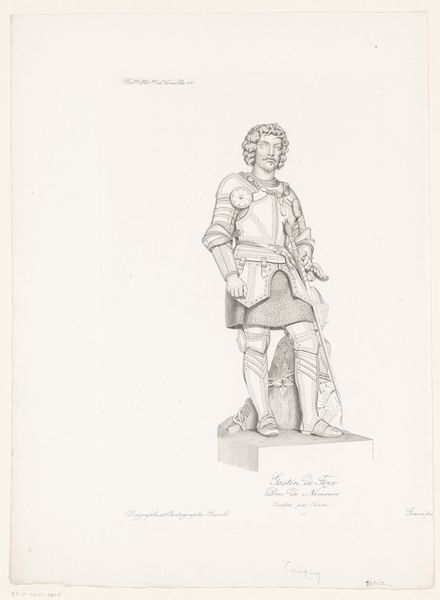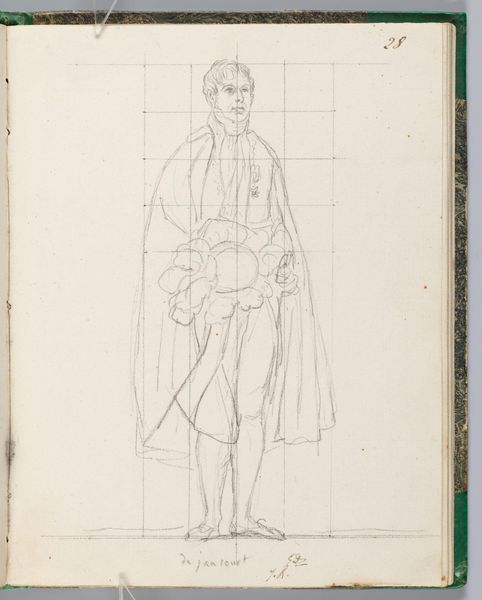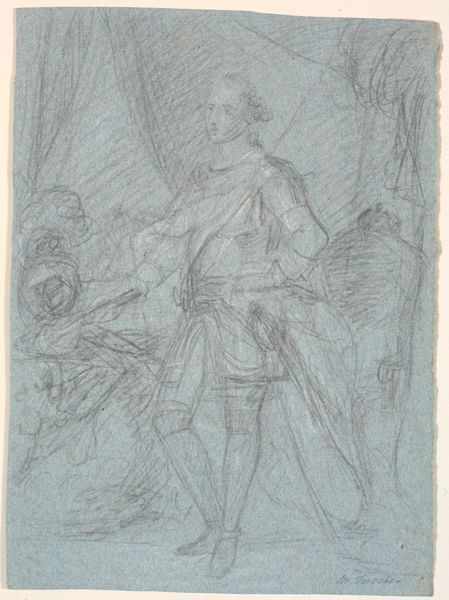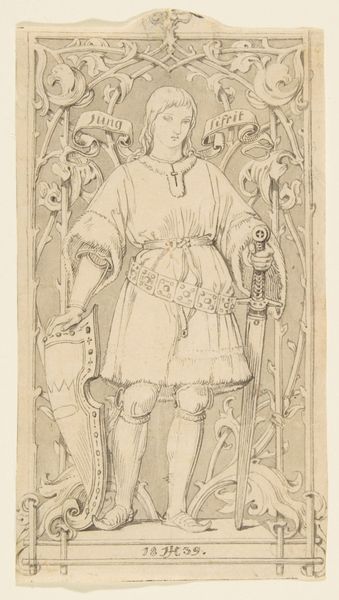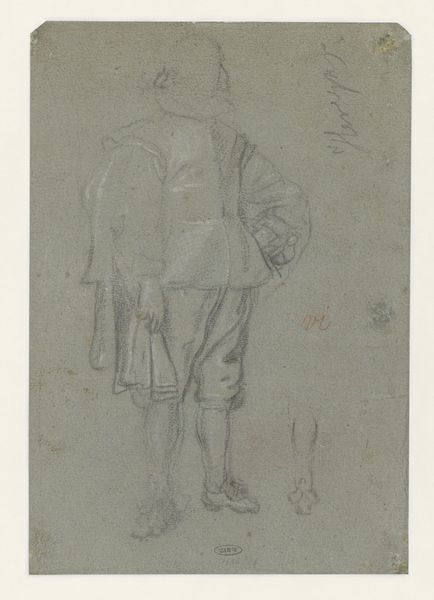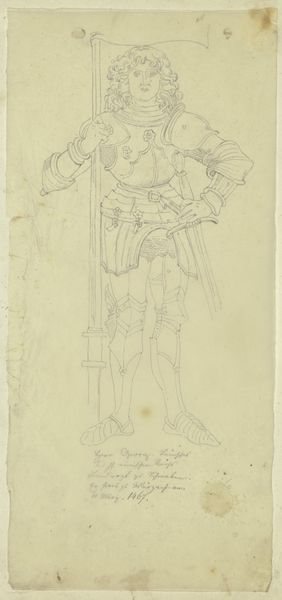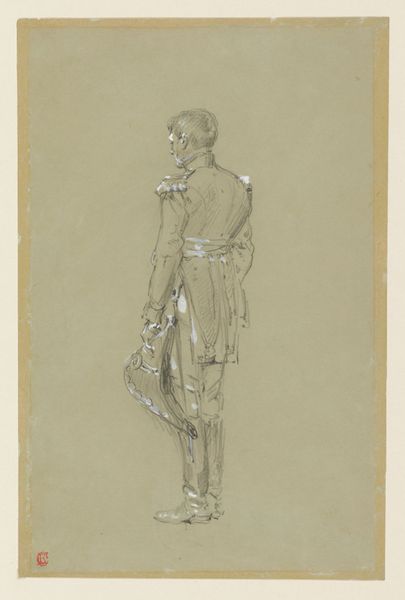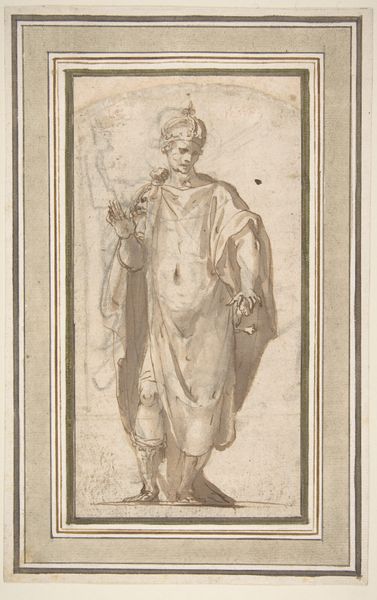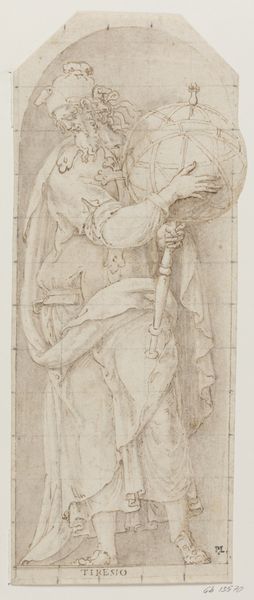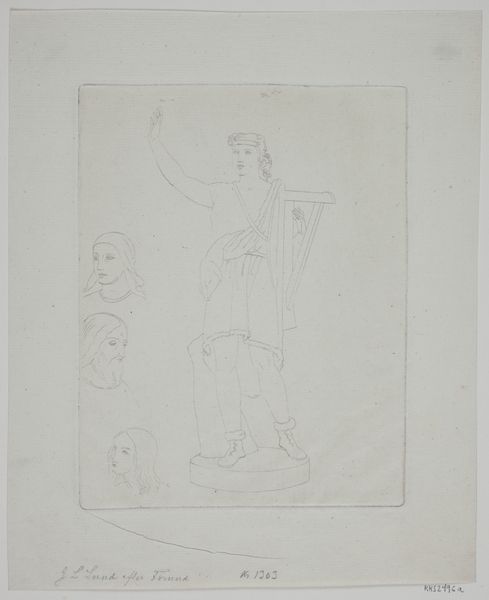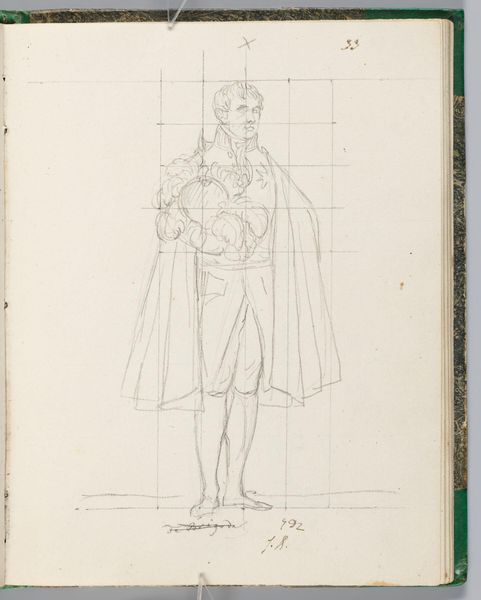
drawing, print
#
drawing
#
amateur sketch
#
quirky sketch
# print
#
pencil sketch
#
incomplete sketchy
#
personal sketchbook
#
sketchwork
#
detailed observational sketch
#
pen-ink sketch
#
water
#
united-states
#
sketchbook drawing
#
initial sketch
Dimensions: 308 × 131 mm
Copyright: Public Domain
Curator: Standing before us is John La Farge's "Study for a Stained Glass Window," dating back to around 1875, now residing here at the Art Institute of Chicago. What strikes you first? Editor: Its raw, almost provisional quality jumps out. It feels like a glimpse into the artist's mind – all the sketched lines and suggested details. Like seeing the scaffolding behind the masterpiece, it immediately signals a complex material project about to come into existence. Curator: Exactly. There's an energy in its incompleteness, isn't there? Knowing that this would become a vibrant stained-glass window adds another layer of depth. La Farge was wrestling with how to capture light and color on this other level, using glass as a medium. The labor and craft involved would’ve been considerable. Editor: Absolutely. I am thinking about the social context. Glass production and manufacturing at the time would've relied on highly specialized artisans and skilled workers. To think of them alongside La Farge, figuring out techniques of production and methods of distribution gives us access to history. Curator: La Farge wasn't afraid to experiment with techniques, including opalescent glass, to achieve richer, more varied color effects. This drawing likely served as a crucial step to test compositions and light dynamics to that degree. You almost imagine him holding it up to the light... picturing the whole effect. Editor: But it’s more than that—a drawing gives a lot of indications. I’m reading the inscriptions along the frame—he's planning “leading.” Also note he labels it as meant "for Harvard Memorial Hall from the full size cartoon." I think his method reflects this need for clarity on top of art-making—an instruction manual. Curator: The classical figure—possibly Epaminondas as the inscription notes—holds such gravity. La Farge imbues the image with something deeply symbolic – this valorous subject combined with glass as material lifts the subject up even higher. Editor: It does show a different relationship to the concept of material; in some sense, La Farge also attempts to elevate the value of laboring with his hands and ingenuity... there is something democratic to his method that might have something interesting to say about how art intersects social life. Curator: That's such a great way to see it, actually – considering how the final work embodies and honors more than the original sketch ever could. I will never look at La Farge’s works again! Editor: For sure, looking at how artists transform materials to transform their own visions is the start of something grand.
Comments
No comments
Be the first to comment and join the conversation on the ultimate creative platform.
